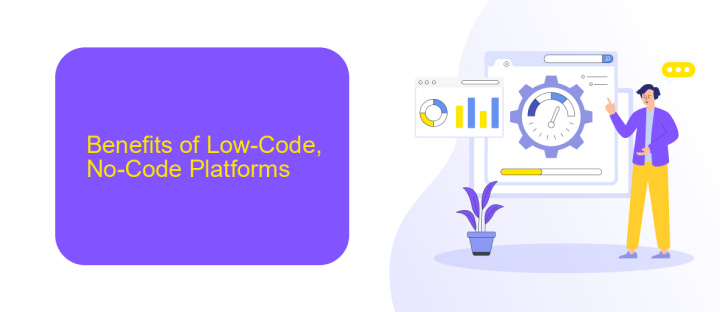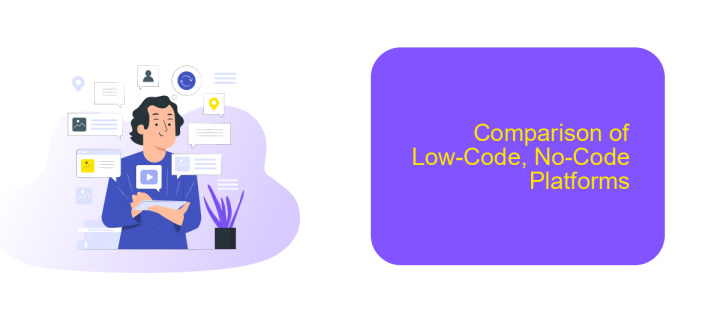Best Low-Code No-Code Platform
In today's fast-paced digital landscape, businesses are increasingly turning to low-code and no-code platforms to accelerate application development and streamline operations. These platforms empower users with little to no programming experience to create robust applications quickly and efficiently. In this article, we explore the best low-code and no-code platforms available, highlighting their features, benefits, and use cases to help you make an informed decision.
Introduction
In today's fast-paced digital world, businesses are constantly seeking ways to innovate and streamline their operations. Low-code and no-code platforms have emerged as powerful tools that enable organizations to build applications quickly without requiring extensive coding knowledge. These platforms democratize app development, allowing even non-technical users to create functional and efficient solutions.
- Accelerate development timelines
- Reduce dependency on IT departments
- Enhance collaboration between teams
- Lower costs associated with custom software development
One of the key advantages of low-code and no-code platforms is their ability to integrate seamlessly with other services. For instance, ApiX-Drive offers robust integration capabilities that allow users to connect various applications and automate workflows effortlessly. By leveraging such tools, businesses can optimize their processes, improve productivity, and maintain a competitive edge in the market.
Benefits of Low-Code, No-Code Platforms

Low-code and no-code platforms offer a plethora of benefits, making them an attractive choice for businesses of all sizes. One of the primary advantages is the acceleration of development processes. By enabling users to create applications through visual interfaces rather than traditional coding, these platforms significantly reduce the time required to bring a product to market. This not only enhances productivity but also allows for rapid iteration and adaptation to changing business needs.
Another significant benefit is the democratization of software development. Low-code and no-code platforms empower non-technical users to participate in the development process, bridging the gap between business and IT. This collaborative approach fosters innovation and ensures that the final product aligns closely with business objectives. Additionally, these platforms often come with built-in tools for integrating various services. For instance, ApiX-Drive simplifies the process of connecting different applications and automating workflows, further enhancing efficiency and reducing the need for manual interventions.
Top Low-Code, No-Code Platforms

Choosing the best low-code, no-code platform can significantly accelerate your development process, enabling you to create applications with minimal coding knowledge. These platforms are designed to empower business users and developers alike, offering a range of functionalities to suit various needs.
- Airtable: Combines the simplicity of a spreadsheet with the power of a database, ideal for project management and collaboration.
- Bubble: Allows you to build fully functional web applications without writing code, offering a robust set of features for customization.
- Zapier: Facilitates automation by connecting different apps and services, streamlining workflows without coding.
- ApiX-Drive: Specializes in setting up integrations between various services, simplifying the process of connecting different applications and automating data transfers.
- OutSystems: A powerful platform for enterprise-grade applications, offering advanced tools for both low-code and no-code development.
These platforms offer diverse functionalities, from simple automation to complex application development. Whether you are looking to streamline business processes or build sophisticated applications, there is a low-code, no-code platform to meet your needs. ApiX-Drive, for instance, excels in integrating various services, making it easier to automate workflows and enhance productivity.
Comparison of Low-Code, No-Code Platforms

When comparing low-code and no-code platforms, it's essential to understand their core differences and advantages. Low-code platforms are designed for professional developers who need to speed up the development process by minimizing hand-coding. They offer more flexibility and customization options, allowing developers to build complex applications with ease.
No-code platforms, on the other hand, target non-technical users who want to create applications without any coding knowledge. These platforms provide drag-and-drop interfaces and pre-built templates, making it simple for users to develop functional applications quickly.
- Low-Code Platforms: Suitable for developers, higher customization, faster development.
- No-Code Platforms: Ideal for non-technical users, easy to use, rapid application creation.
- Integration: Tools like ApiX-Drive facilitate seamless integration across various services.
Choosing between low-code and no-code platforms depends on your team's technical expertise and project requirements. While low-code platforms offer greater control and flexibility, no-code platforms enable rapid development for users without programming skills. Both types can benefit from integration services like ApiX-Drive to streamline workflows and enhance functionality.
Choosing the Right Low-Code, No-Code Platform
When choosing the right low-code or no-code platform, it's essential to consider your specific business needs and technical requirements. Start by evaluating the platform's ease of use, scalability, and flexibility. Ensure it provides a user-friendly interface that allows both technical and non-technical users to create applications efficiently. Additionally, check if the platform supports the necessary integrations, as seamless data flow between different software systems is crucial for operational efficiency.
Another critical factor is the platform's ability to integrate with other tools and services. For instance, ApiX-Drive offers robust integration capabilities, allowing you to connect various applications without the need for extensive coding. This can significantly streamline your workflows and improve productivity. Moreover, assess the platform's security features, customer support, and pricing structure to ensure it aligns with your long-term business goals. By thoroughly researching and comparing different platforms, you can select the one that best meets your organization's unique needs and drives innovation.
FAQ
What is a low-code/no-code platform?
Who can benefit from using low-code/no-code platforms?
How secure are low-code/no-code platforms?
Can low-code/no-code platforms be integrated with other tools and systems?
What kind of support and resources are available for users of low-code/no-code platforms?
Strive to take your business to the next level, achieve your goals faster and more efficiently? Apix-Drive is your reliable assistant for these tasks. An online service and application connector will help you automate key business processes and get rid of the routine. You and your employees will free up time for important core tasks. Try Apix-Drive features for free to see the effectiveness of the online connector for yourself.

